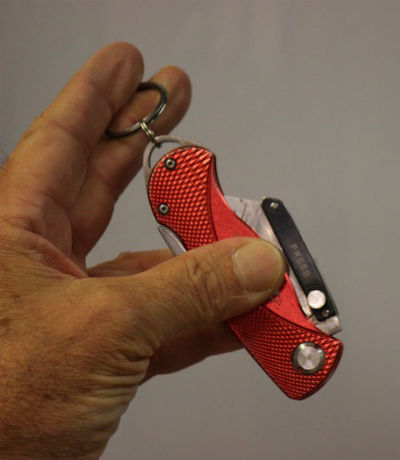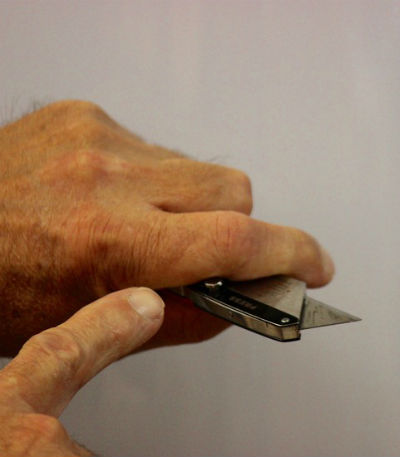
 by Steven D. Johnson
by Steven D. Johnson
Racine, Wisconsin
(Page 2 of 4)
Previous Page
1
2
3
4
Next Page
Most Frequently Asked Questions
Click on any picture to see a larger version.
I get a lot of emails. A lot. I try (I really do!) to answer them all, but in the confusion that often surrounds YouTube "Comments," FaceBook "Conversations," and Google+ "Circles" and "Comments," compounded by the necessity of multiple email accounts, I undoubtedly miss a few. Sorry about that.
A lot of emails address similar topics, so occasionally it is worthwhile to compile a list of the MFAQs (Most Frequently Asked Questions) and answers.
Question:
Can I get a copy of [plan, drawing, etc.]?
Answer:
Many of the drawings, Excel spreadsheet "calculators," and other things that folks frequently request are housed in the
Highland Woodworking Library
. Go to the home page
(http://www.highlandwoodworking.com)
and click on the "Library" link in the top navigation menu bar.
Scroll down a ways and you will find the
"Down To Earth Woodworker"
section clearly labeled. Of course you may well get distracted as you scroll down through the information because there is so much other good stuff!
Question:
What finish do you use for shop furniture/fixtures?
Answer:
For a long time I used
Watco Danish Oil
… so much so, that I took to buying it by the gallon. Of course it comes in pints and quarts, too. It is so easy to use! I slopped it on with a foam brush, wiped off the excess with a rag, and let it dry. Multiple coats lend visual depth and additional protection. On top of that, since shop furniture is subjected to more abuse than, say, kitchen cabinets, the Watco product is very easy to repair. Simply sand out the damaged area and recoat. It will blend in nicely and your repair will disappear.
Lately, though, I have been using two to three coats of shellac and three top coats of
General Finishes' Arm-R-Seal
in satin. I love shellac. There are countless reasons and maybe someday I will elaborate. But for now, suffice it to say it is easy to make color adjustments to wood with shellac, it is a perfect sealer under almost any kind of finish, it is easy to clean up, it is very cost effective, easy to apply, relatively mistake-proof, and… okay, I better stop now or this answer will be way too long. The Arm-R-Seal product is a wiping varnish. It is a tad "stinky" but it really protects and looks fantastic. Sand lightly between coats except the next-to-last. Use 0000 steel wool before the final coat. The best steel wool is
Liberon
.
By the way, you probably have certain expectations when you purchase a finish in either flat, satin, semi-gloss, or gloss, and so do I. On the
5S Shop Wall Cabinet project
I applied General Finishes' Arm-R-Seal in satin, fully expecting a slight sheen… not a semi-gloss sheen, and certainly not a glossy sheen, but a very slight "shininess." After applying the second coat and it dried completely, I almost ordered some semi-gloss, thinking that General Finishes' version of satin was way too flat for me. But I trudged on, applied a third coat and, lo and behold, the beautiful satin reflection I was expecting finally showed up. I should have read the directions. The can states very clearly "Three coats are recommended." So if you use this product, in whatever sheen you choose, follow the directions and put on three coats before you judge the final finish. It's worth the wait.
Question:
Should the
SawStop Outfeed Table
be secured (anchored, attached) to the SawStop?
Answer:
This question arises from a (legitimate) concern that when pushing a large or heavy piece of wood through the saw, the outfeed table might move since it is on wheels. The answer is "no." The locking casters on the "drawer side" of the outfeed table are more than sufficient to hold the table in place. Mine has never moved once… not even a millimeter. But if you are a belt and suspenders type, go for it. There is a bunch of different ways you could connect the two. The most elegant, and simplest, came from a viewer who recommended a pair of spring-loaded pins mounted to the SawStop rear rail that would snap into matching holes in the underside of the torsion box top of the outfeed table.
Question:
What is the best purchase you ever made in woodworking? What was the worst?
Answer:
My best purchase was a new Rado watch for my wife. I had to save my nickels and dimes for a long, long time, but the residual glow of appreciation significantly aided and abetted my eventual
purchase of a SawStop PCS
, the actual smartest woodworking purchase I ever made.

|
Figure 4 - Pretty... almost a
"Woodpeckers Red"...
|

|
Figure 5 - ...but nowhere near
as smart!
|
A list of "worsts" would be pretty long. Tools that looked great on paper (or the internet) but turned out to be virtually unusable in practice. Tools that took more time to set up than they were worth, tools that were fussy, impractical, imprecise, sloppily made, or that had had lousy directions… the list is still growing. Currently, however, I am obsessing over what I call The World's Stupidest Utility Knife.
Have you ever purchased something because it "looks cool?" Admit it, you have. So have I. And this, the stupidest knife in the world, was purchased for that very reason. Everyone needs a utility knife. I think I have five of them in different shapes and sizes. They all use the same disposable blades, but the different handles, locking mechanisms, blade-holding systems, and folding styles reminds me of the old adage, "build a better mousetrap, and the world will beat a path to your door." Well, no one will beat a path to buy this knife, the world's dumbest.
Why is it dumb? Well, even if you are not left-handed, you will undoubtedly sometimes use a utility knife with your left hand. No matter how you try to grip this knife in the left hand, your forefinger will lie almost exactly across the top of the blade release button and as you make a cut the blade will slide out. It's dangerous, it's highly likely to lead to errant cuts, and it's just plain stupid. Left-handers make up 10% of the general population (a higher percentage among psychotics and people with other mental disorders, but that is a whole different story!) and it is almost impossible to believe that a large company couldn't find one single left-handed person to test this product. Stupid.
Question:
You use clear Plexiglas panels in shop cabinet doors. How should they be cleaned?
Answer:
First, "clear acrylic" and "Plexiglas" is the same material (Poly[methyl methacrylate] or PMMA). I think (I hope) I used the generic term "acrylic" or "clear acrylic" throughout my videos. Plexiglas is the trademark of the acrylic product made by the original inventors, but others make the product now. It is kind of like saying "Kleenex" when you really mean "tissue."
Clear acrylic is great stuff, but it has one… no, actually two… drawbacks for our use… it scratches more easily than glass. Cleaning it with regular glass cleaners is a no-no. Instead use those handy blue shop towels on a roll (they are very soft) and a product called Novus 1 Plastic Clean & Shine. A tiny spritz is all you need, and with a little elbow grease even the toughest dirt and grime will be safely removed from acrylic panels. There is no rinsing needed… just keep turning the soft towel and wiping until the panel is crystal clear. Good stuff.
What's the other drawback? Clear acrylic can develop static cling like socks in the clothes dryer. The Novus 1 seems to reduce the static cling, but the best way to keep the clear acrylic clear and dust-free between cleanings is to give it an occasional light wipe with a microfiber cloth.
Question:
What kind of plywood do you use? Where do you get it?
Answer:
Really crappy expensive plywood from the big-box store. Woops, can I say crappy? It's a type of fish, right? What do you mean I misspelled it?
Plywood is simply not what it used to be. In a largely failing effort to keep prices down, it seems to me that big-box stores have been sourcing plywood that is on a continuous spiral down in terms of quality. Let's set construction-grade plywood aside for now and talk only of the so-called premium grades (sometimes called "hardwood plywood," "furniture grade plywood," etc.). A mere handful of years ago these more expensive grades of plywood had more interior cores, less voids, nicer face surfaces, and were flatter and more consistent… not so much anymore. But I still use them. It's a "cost" thing.
If I could afford it, I would work only with Baltic Birch plywood. It is (still) what fine, high-grade furniture-grade plywood should be. But it is pricey and not nearly as widely distributed, which leaves us the limited choices of either long drives or exorbitant shipping costs or limited sizes we can purchase. So for now I am stuck working around the voids, the splits, and the surface imperfections in the cheaper stuff. I have noticed that as time rolls on, there is more and more waste from each sheet of so-called "furniture grade" plywood as the worst sections get cut away and tossed (cutting away all that ugly unusable stuff is what leads some viewers to think I have found a secret supply of "good" plywood – I haven't). Pretty soon the percentage of waste will likely negate the savings between big-box plywood and special order plywood, and then some decisions will have to be made. But until then, for the most part I buy my plywood just like you do… from the closest big-box store.
(Page 2 of 4)
Previous Page
1
2
3
4
Next Page
Return to
Wood News
front page

